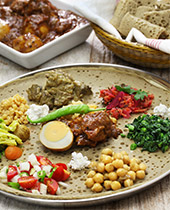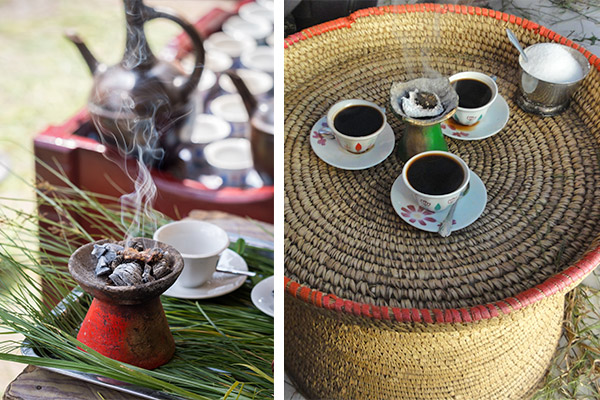
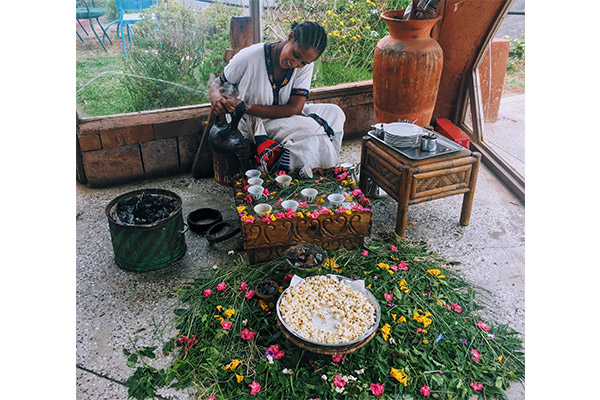
Using a mortar and pestle, she grinds the beans coarsely and adds these to a terracotta coffeepot filled with water, bringing it to a boil. The aromatic coffee is poured into demitasse cups from about a foot above the cups (this prevents the grounds from ending up in the cups). Cups are filled right up to the brim – sugar is optional, but milk is not usually offered (although ‘macchiatos’ are now creeping in and are equally delicious!) Savoury snacks are served alongside; often popcorn, peanuts, or puffed barley.
Dark, bitter, but smooth,
this coffee is divine!
this coffee is divine!
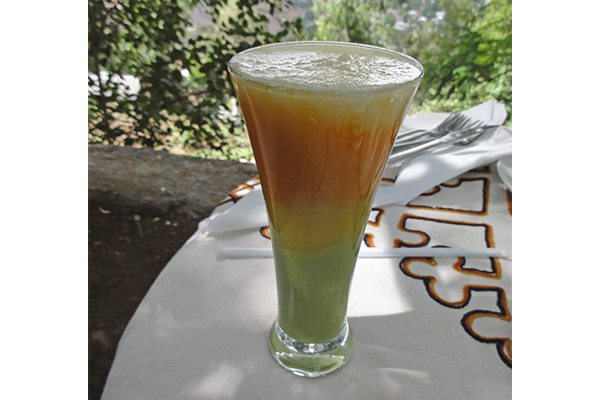
Another wonderful Ethiopian drink is the Spris, a layered drink of pureed fruits that is as beautiful as it is delicious! Avocado, mango, and papaya are most often used with the densest juice at the bottom and decorated with a slice of lime. The glass is served with a spoon as the juice is so thick. Dig all the way to the bottom to get all the flavours at once!
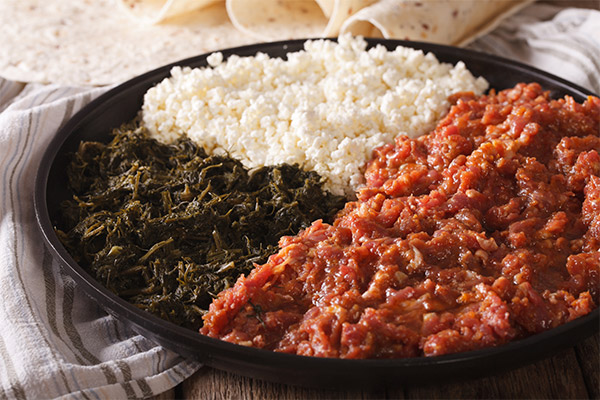
Kitfo is an Ethiopia ‘steak tartare’ that will melt in your mouth. Like its European cousin, the raw beef is freshly ground and then mixed with flavours. In Ethiopia, this means the special spice mix called mitmita which contains the chef’s personal blend of bird’s eye chili, cardamom, cloves, cinnamon, cumin, ginger, and salt. The dish is finished with a dollop of nit’ir quibe; clarified butter infused with herbs and spices. Kitfo is rich, creamy, and altogether irresistible! You can order it slightly cooked (leb leb) but order it raw for the best experience.
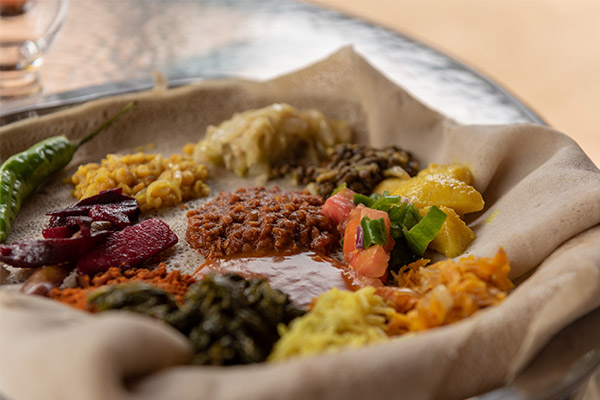
Lastly, the iconic injera is the spongy, slightly sour, Ethiopian bread that looks like a thick crepe. It’s served cold, lining a platter, with a choice of vegetable or meat dishes piled on top. Injera is made with t’ef a grain that is gluten free, low fat, and loaded with protein, fiber, and manganese plus moderate amounts of calcium, Vitamin C, and iron. It’s mainly cultivated in Ethiopia where it originated and is the most important commodity for both production and consumption. Move over quinoa – I’m predicting t’ef will be the next superfood!
Join our next Ethiopian adventure, April 18 - 20, 2020 | Just a few spots left!
Led by Michael Gervers
Click here to learn more and download the detailed itinerary.
Led by Michael Gervers
Click here to learn more and download the detailed itinerary.


